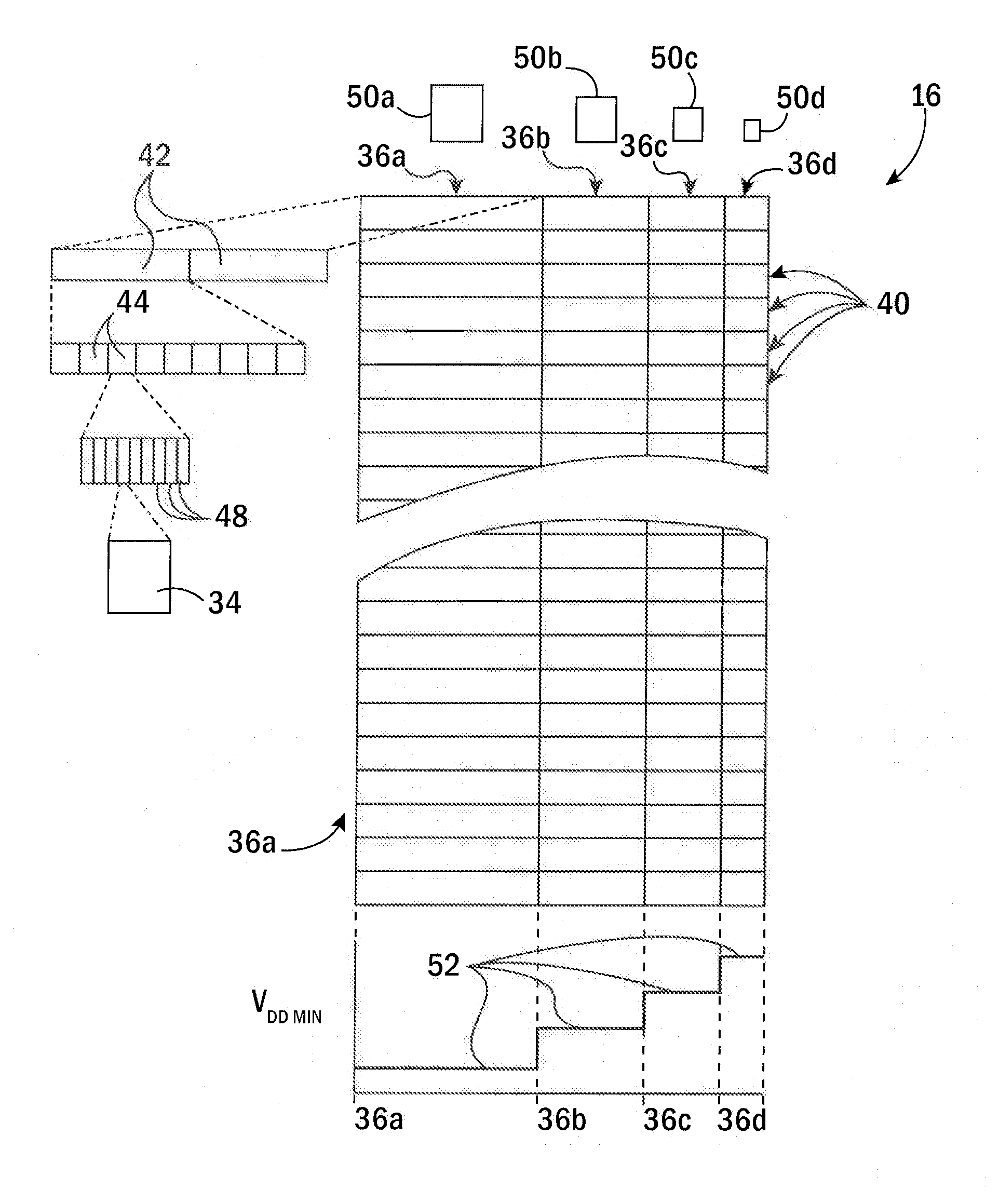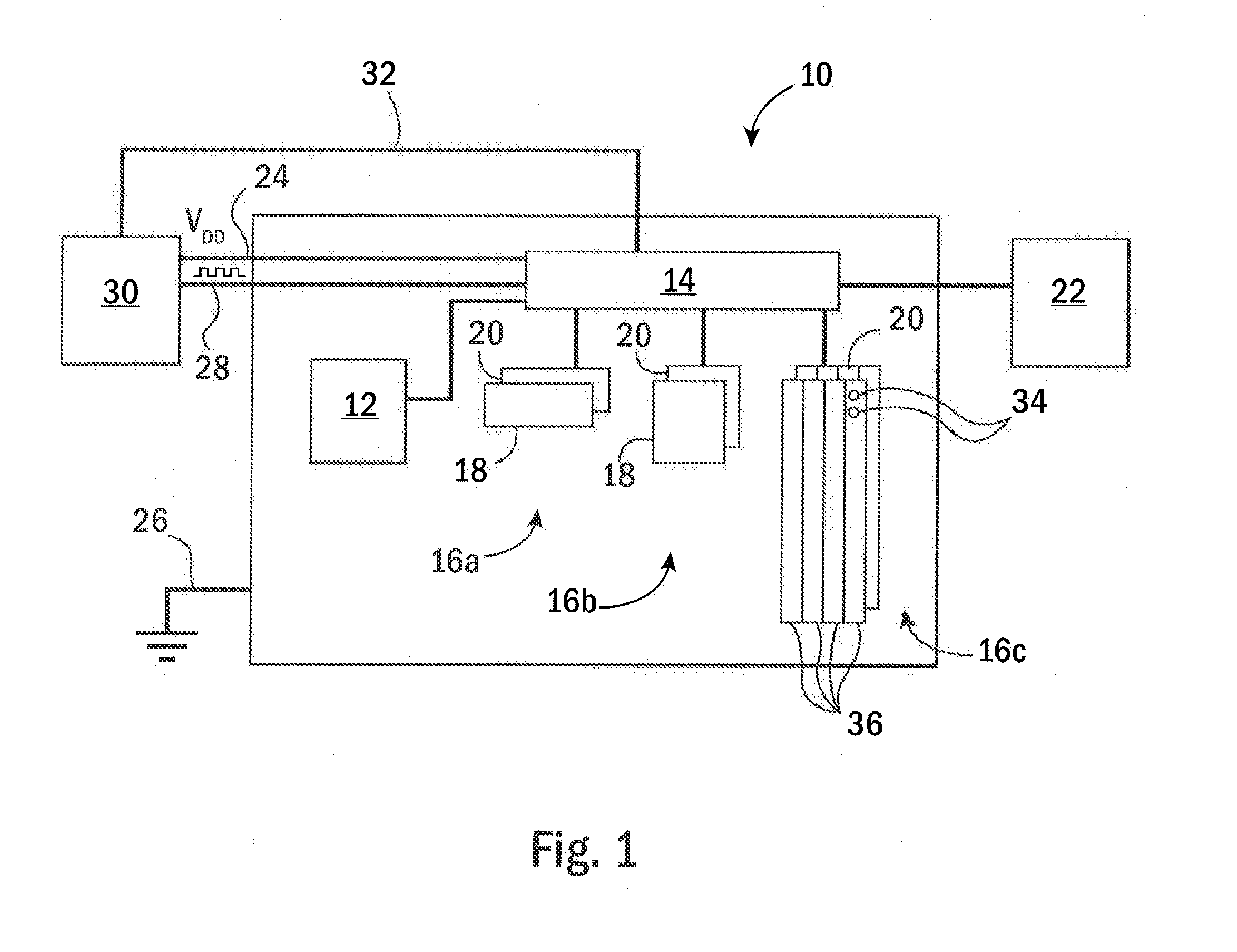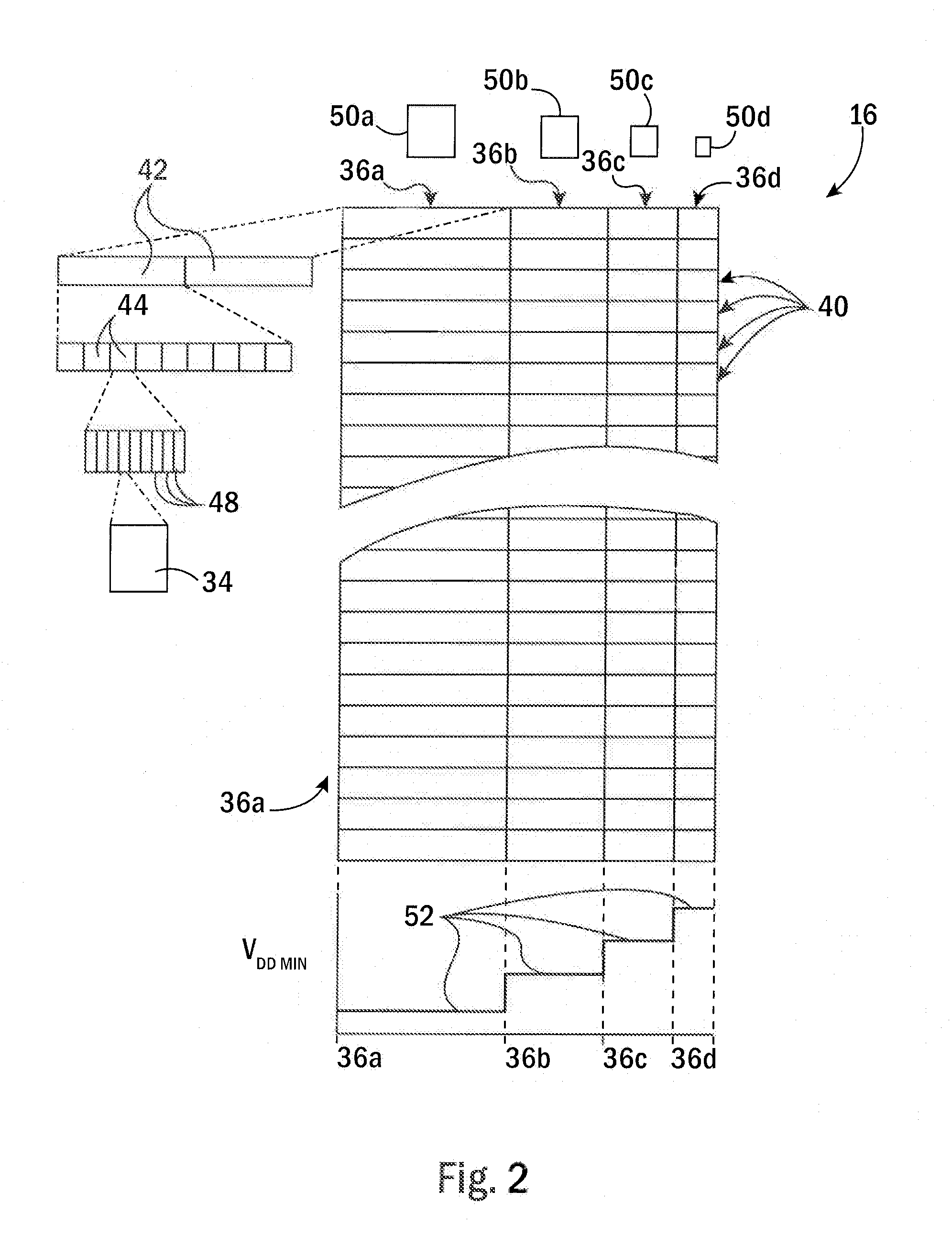Energy Efficient Processor Having Heterogeneous Cache
a heterogeneous, processor technology, applied in error detection/correction, sustainable buildings, instruments, etc., can solve the problems of reducing the cache capacity at low voltage, reducing the processor performance, and reducing the cache capacity. , the effect of reducing the cache capacity
- Summary
- Abstract
- Description
- Claims
- Application Information
AI Technical Summary
Benefits of technology
Problems solved by technology
Method used
Image
Examples
Embodiment Construction
[0036]Referring now to FIG. 1, an integrated circuit element 10, for example, a core of a microprocessor or a freestanding microprocessor, may include a processor element 12 communicating via cache controller 14 with an L1 cache 16a, an L2 cache 16b, and L3 cache 16c.
[0037]Each cache 16 may include a data portion 18 and tag portion 20, as is generally understood in the art, and, operating under the control of the cache controller 14, may load data from a main memory 22 together with a tag address identifying the source address of that loaded data in the main memory 22, and may provide that loaded data to the processor element 12 in response to instructions reading the main memory 22 at the particular source address. The caches 16 may further receive modifications of the loaded data from the processor element 12 and may store that data back to the main memory 22 under control of the cache controller 14. In these respects, the cache controller 14 may operate in a conventional manner ...
PUM
 Login to View More
Login to View More Abstract
Description
Claims
Application Information
 Login to View More
Login to View More - R&D
- Intellectual Property
- Life Sciences
- Materials
- Tech Scout
- Unparalleled Data Quality
- Higher Quality Content
- 60% Fewer Hallucinations
Browse by: Latest US Patents, China's latest patents, Technical Efficacy Thesaurus, Application Domain, Technology Topic, Popular Technical Reports.
© 2025 PatSnap. All rights reserved.Legal|Privacy policy|Modern Slavery Act Transparency Statement|Sitemap|About US| Contact US: help@patsnap.com



